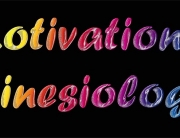“Even the least among you can do all I have done and greater…” – Jesus
It is not the outside world that stops us as much as what our inner dialogue tells us. Maxwell Maltz in his book “Psychocybernetics”describes humans as being “goal orientated servo- mechanisms” (thinking machines). We achieve exactly what we deeply believe to be true, i.e. a person who internally believes “I am worthless”, will always act worthless no matter what their financial status or lifestyle.
We set the bar and decide how high or low we are going to jump.
Each and every thought acts like a self guiding missile reaching its programmed destination. The programmers are our inner voices. Yes, there is more than one. These sub-personalities all react and respond differently.
- The Logical Self: This is the thinking, rational part we closely identify with. This self seeks explanations and tries to make sense of the world through rational thinking processes. This is the left brain in action.
- The Inner Child: This is the childlike, spontaneous, sexy, fun- loving part of us, more feeling than thinking. When this part is suppressed, they can become angry, spiteful and destructive.
- The Victim: The poor-me type that feels the world is out to get them. They act innocent and helpless and need rescuers.
- The Rescuer: This type needs to be a helper so they can feel good about themselves. They need victims to rescue.
- The Persecutor: This type is angry and hostile while appearing logical. They use their logic and reason as a whip to abuse their victim. This type can be the victim or rescuer. If a rescuer can’t rescue or a victim isn’t being rescued they become a Persecutor.
- The perfectionist: Like the persecutor, this sub-personality makes us feel inadequate, continually telling us that we should have done better. The perfectionist often seems critical, impatient, frustrated, demanding and sarcastic.
- The Good Bloke: This variation of the victim is an easy going, placating, helpful sub-personality who hopes that if he/she is nice enough to everyone everything will be okay.
- The Saboteur: A trickster and a devil, often found in the guise of the innocent, confused or acts dumb.
- The Over Achiever: This is the workaholic, the all work and no play sub-personality, often resulting in negative physical, mental and/or emotional reactions.
- The Creative Self: This relative of the playful self has an added sense of awe and beauty. This self can produce inspiration and joy and is open to all possibilities. This is the right brain in action.
- The Observer: This type oversee all the other sub-personalities and is the least developed in most of us. This is the inner managing director who keeps the “whole show” running.
- The Sage: Rarely if ever developed, let alone respected. This is our own inner guidance counsellor, combining our knowledge and experience in creating wisdom. This is the key to our success as the sage is the team leader for all the other sub-personalities.
Knowing each personality’s strengths and weaknesses enables us to better manage our goals. Remember we always have a whole team working for us.
Spend some time sitting quietly and listen to those inner voices and listen very closely to the conversation. Does your inner dialogue inspire your confidence or undermine it?
The easiest thing to do is set goals, the hard part is understanding the limiting beliefs and habits that undermine our progress. Motivational Kinesiology has assisted many people to achieve their goals, whether it was to reduce pain, sell a house, quit addictions, overcome fears, lose weight, etc. All our consultations are started with a goal or sometimes several goals.
When setting goals it is important to record them by writing them down, taping (audio or video), etc, and making them believable. Start with small goals and build on them – take baby steps at first and you will end up making giant leaps. Build confidence in your self by being sensible and always think long term.
Willingness is one of the key issues which, when addressed unlocks our potential to create our desired outcomes.
A Clinical Example: A client drank too much Coke and they were not in control of their caffeine habit. With the goal set, a solution was found. Each week they allocated money for their “habit“. What they didn’t spend was to be saved to purchase a new camera. To date none of the money has been used and they “kicked the habit” overnight. We were able to identify a stronger desire and use it to the client’s advantage.
Their motivation to have Nikon’s latest model camera was stronger than their need for caffeine.






Leave A Comment
You must be logged in to post a comment.